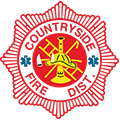Week 1: Make a Plan
- Talk with family members about your emergency plan. Discuss how you will stay in touch when disaster strikes and review CDC recommendations during COVID-19.
- Tailor your plan to specific needs in your house. Consider:
- Disabilities and older adults
- Children and pets
- Medical needs
- Create a budget that includes an emergency savings fund.
Week 2: Build A Kit
- Ensure your kit is stocked with essential items, including what is needed to protect you and your family from COVID-19.
- Consider the unique needs of your family (example: families with infants should include formula, diapers & bottles).
- Have enough supplies for several days and store items in airtight containers.
- Help individuals with disabilities prepare for disasters.
Week 3: Prepare for Disasters
- The CDC has published a #PrepYourHealth Digital Media Toolkit with suggestions on how people can create a community before a disaster or emergency.
- Sign up for emergency alerts so that during a disaster or emergency you receive immediate life-saving information from your state and local municipality.
- If you live in an area that is prone to earthquakes, consider making improvements to your building to fix structural issues that could cause your building to collapse during an earthquake.
- If you live in an area prone to wildfires, create a defensive space around your home by clearing debris or articles that could easily fuel the flames.
- If you live in an area prone to hurricanes, install shutters for all your windows.
- If your area is prone to flooding, keep important documents in a waterproof container. Also, protect your property by purchasing flood insurance.
Week 4: Teach Youth About Preparedness
- Youth are an important part of building a national culture of preparedness; children under the age of 18 make up nearly one-quarter of the entire U.S. population.
- Promote good financial saving practices by providing clear steps to saving, budgeting, setting and meeting financial goals.
- The Consumer Financial Protection Bureau has additional resources online to teach youth financial capability.
- Check out the Ready Kids website for tips on how to prepare your entire family.
Last Updated: 09/03/2020

